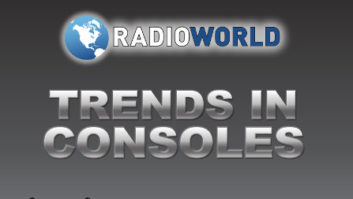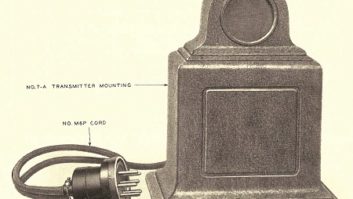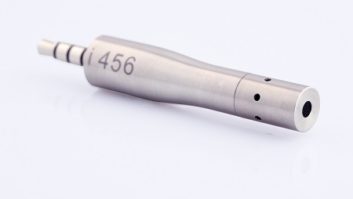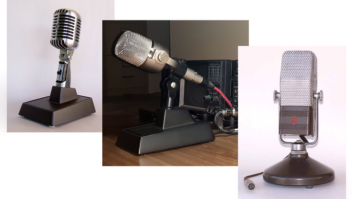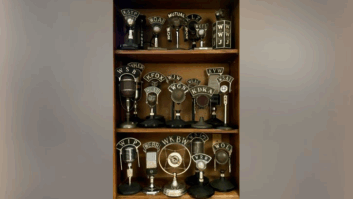The smartphone has found a place in my arsenal of radio news tools.
I navigate and communicate with my Sprint EVO Shift. And from time to time I need to transmit and record audio for two-ways, interviews or full-blown live spots.

The Radio Road Warrior uses the Access Reporter Codec for Android.
The smartphone has found a place in my arsenal of radio news tools.
I navigate and communicate with my Sprint EVO Shift. And from time to time I need to transmit and record audio for two-ways, interviews or full-blown live spots.
The choke point for audio for any cellphone (smartphone or not) is the headset jack. Improving the audio into the phone with the connection of an external microphone and headphones can work wonders. That works even better with smartphone applications that in effect turn the smartphone into an audio codec.
The iPhone is the most popular smartphone platform. Codec maker Tieline has leveraged that with hardware and software that allows radio reporters and producers to transmit, record, edit and transmit audio. The hardware is the Mic Adapter, which connects to the iPhone’s connector port. This device lets a user connect a microphone with an XLR input, a stereo line input, headphones and a USB cord for charging the iPhone. The Mic Adapter has an onboard AAA battery slot, which powers the unit and extends the charge on the iPhone battery. Those capabilities impressed the Radio World “Cool Stuff” judges enough to be a 2011 award winner.
Simplification
I chatted with Fox News Radio’s Eben Brown at Homestead Miami Speedway while covering the NASCAR Sprint Cup finale and asked him about his use of smartphones. Brown told me about a free app called the Hokusai Audio Editor that allows him to break out cuts of actualities and play them more efficiently when he uses the iPhone to feed reports back to the studio.

The Warrior’s kV Connection configuration for using a dynamic mic with his Sprint EVO smartphone.
The day is already here when reporters like Brown basically can take an iPhone to a news situation and feed studio-quality narration and actualities with no other devices, as he did when covering the NASCAR Sprint Cup Finale at Homestead. That development helps news departments with severely limited budgets. With the growing penetration of smartphones in general use, to add and upgrade software at the reporter level makes more operational and fiscal sense than it would to invest in hardware at that level with severe budget constraints.
On my visit to the Comrex booth at the NAB Show last spring, I discussed the audio chokepoint problem with Comrex’s Chris Crump, who showed me his Sprint EVO running the Access Reporter Codec for Android software (the app I run on my EVO Shift) and an adapter from kV Connection/Sixn Technologies (kvconnection.com). The kV Connection adapter allows the user to plug a standard dynamic mic into an XLRF connector that is connected in parallel with a 3.5 mm TRS female jack for the corresponding 3.5 mm male connection, whether a patch cord or headphones. Those input and output connections are connectedinto a 3.5 mm four-pole jack that connects into the headphone/microphone 3.5 mm jack of the smartphone, thus bypassing the onboard microphone and speaker. I know that sounds complicated but when you see it in action you’ll understand. This configuration allows for a professional microphone input and a way to monitor with earbuds.
KV Connection makes all sorts of adapters for BlackBerrys, Androids, iPhones and other devices. These let users interface a microphone and earbud headset or line-level inputs and outputs to the smartphone. Because of the different wiring conventions, some of the devices may not work at first so kvconnection.com customer service may have to walk you through those issues.

Audio-Technica’s BP4001 and BP4002 Interview Microphones.
I have a kVconnection connector that works in the field with my Sprint EVO Shift. The connector fits easily in my fanny pack, and I use it with a set of earbud headphones, and my short-barreled Shure SM63 dynamic mic. Interfacing with my studio Peavey PV8 mixer proved to be a challenge. The PV8 has two aux send channels (pre-fader/monitor and post-fader/effects). I’ve set up the post-fader/effects channel as the mix-minus send for the codec interface. I can send a mic level signal to the phone through a 40 dB XLR pad, the return from the phone goes to the input that is the minus in the mix-minus feed. In a future column, I’ll let you know how I solve this challenge so you can help others solve similar issues.
More news baubles
Another Comrex goodie that caught my attention in the past year was the Access 2USB, a field IP codec. The unit adds two USB ports and support for some 4G wireless data modems to the hardware, and AAC codec algorithms to the Comrex BRIC transmission algorithm.
Also new, Audio-Technica has been showing off a pair of extended-length dynamic field interview microphones, the cardioid BP4001 and omnidirectional BP4002. The extended length might prove useful in a scrum where the extra length can mean the distance between on-mic and off-mic audio. I’ve got them and will tell you more about how they work in the field later on.

The Tascam DR-05 Handheld Digital Recorder.
Another item I shopped for recently was an audio recorder that would record mono WAV audio, fit easily in either my road kit or fanny pack and cost less than $100. One of Tascam’s latest, the DR-05 SD card recorder, records audio in WAV and MP3 formats in mono and stereo and has a street price of $99.
Let’s consider the possibilities with such a unit. For $300, an operation could buy three recorders that can record professional-quality audio easily. So not only can a newsperson record the audio necessary for news reports, an enterprising local salesperson or two can record customer audio on location for commercials. With studio-quality recording capability in the palm of a hand, studios need not be tied up for simple interviews. The unit could pay for itself.
I and the editors want to make sure these columns are helpful, and that the information in these columns opens your eyes to possible, practical and cost-effective ways to make life easier for field reporters and their engineers. The hope is that those improvements I write about and research will result in better news programs for your listeners, advertisers and other stakeholders in that process. Don’t hesitate to e-mail me or the editors with those suggestions for future columns along with your comments and questions.
Paul Kaminski is the news director for the Motor Sports Radio Network, a contributor for CBS News, Radio, and since 1997, a Radio World contributor. His e-mail address is [email protected]. Follow him on Twitter at MSRnet.
